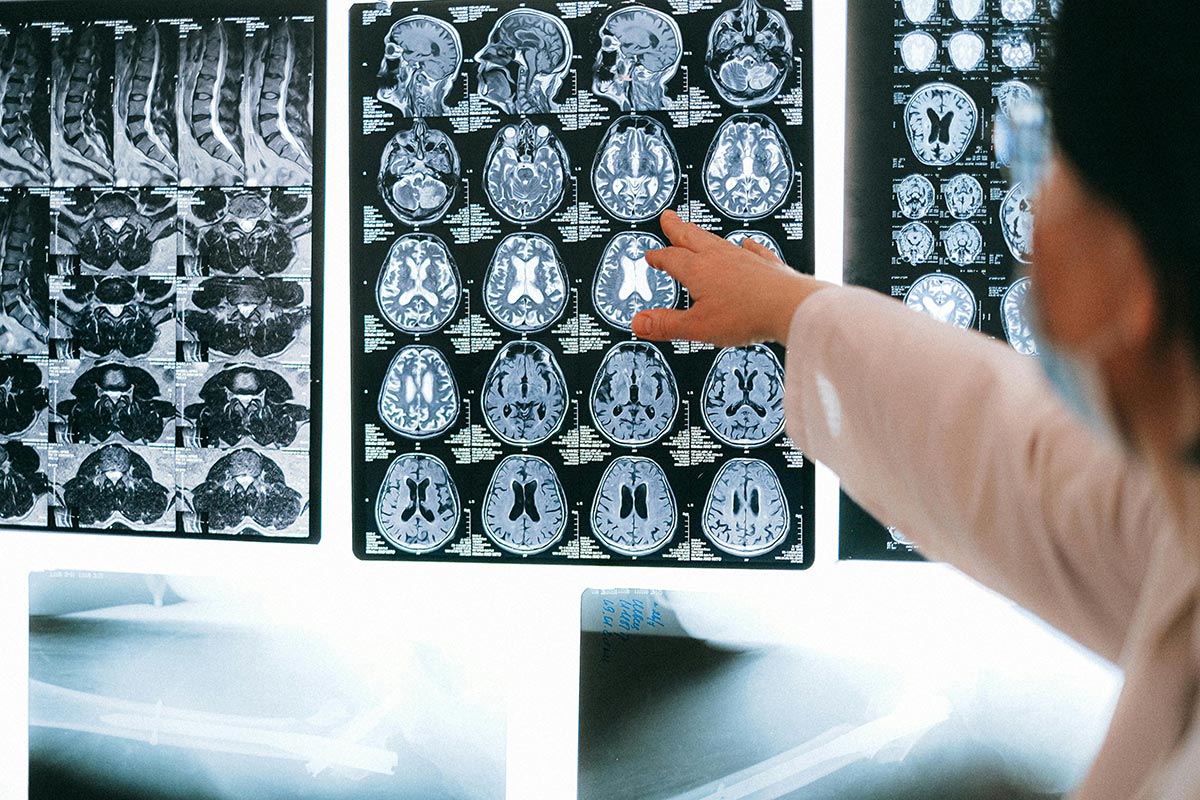
Understanding Body Image and Substance Use
Exploring the Link
The connection between body image and substance use is a complex issue that significantly affects individuals. Negative body image can often lead to mental health problems and substance abuse. Individuals struggling with negative perceptions of their bodies may experience feelings of inadequacy and low self-worth. These emotions can drive them to drugs and alcohol as a means of coping with their distress [1].
Many people historically used substances to manage their weight. For example, cocaine has been known to suppress appetite, while alcohol can induce vomiting. Such behaviors not only pose severe health risks but also pave the way for addiction, making professional treatment necessary for recovery [2].
Impact of Negative Body Image
Negative body image can have far-reaching consequences, particularly when it comes to mental and physical health. Individuals who struggle with poor self-esteem related to their appearance may resort to harmful methods for weight management, leading to eating disorders like anorexia and bulimia. These eating disorders often co-occur with substance use disorders, as individuals may use drugs or alcohol to numb the emotional pain associated with their body image issues.
The ramifications of substance abuse are substantial, including severe health consequences such as cancer, heart disease, and reduced brain function. This is particularly true if substances are used as a means for weight control. Seeking professional help that addresses body image issues within substance use treatment is crucial for individuals facing these dual challenges [2].
| Consequences | Description |
|---|---|
| Mental Health Issues | Feelings of inadequacy, depression, and anxiety |
| Eating Disorders | Conditions like anorexia and bulimia |
| addiction to Substances | Drugs or alcohol used as emotional crutches |
| Physical Health Risks | Serious conditions such as cancer and heart disease |
Addressing body image issues in substance use treatment can pave the way for a healthier relationship with food, reducing the need for substances as coping mechanisms. It is essential to support individuals in developing this healthier perspective. Accessing appropriate treatment programs focused on addressing eating disorders in substance use treatment can provide comprehensive support for those facing these challenges.
The Relationship with Eating Disorders
Understanding the interplay between eating disorders and substance use is crucial in addressing body image issues in substance use treatment. Negative body image can result in poor mental health outcomes, potentially leading to or exacerbating issues with addiction.
Co-Occurring Conditions
Research illustrates that negative body image serves as a significant risk factor for substance abuse, particularly among adolescents. Studies indicate that between 40% and 70% of adolescent girls are dissatisfied with two or more aspects of their body, while 50% to 80% express a desire to be thinner [3]. Poor body image can lead to unhealthy coping mechanisms, including substance use.
The relationship between eating disorders and substance abuse is particularly troubling. Individuals with eating disorders, such as anorexia and bulimia, often develop addictions as both conditions may arise from similar underlying issues. This overlap necessitates a focus on co-occurring disorders in treatment, addressing the root problems simultaneously rather than sequentially [4].
| Condition | Prevalence Rate (%) |
|---|---|
| Eating disorders among those with substance abuse issues | Variable, with studies indicating a strong co-occurrence |
| Negative body image among adolescent girls | 40 - 70 |
| Desire to be thinner among adolescent girls | 50 - 80 |
Treatment Strategies
Addressing both eating disorders and substance use is vital in treatment programs. Integrated therapy approaches that focus on improving body image while also addressing addiction can lead to more effective outcomes. Therapy modalities may include cognitive-behavioral therapy (CBT), which assists individuals in challenging distorted views of their bodies and developing healthier coping strategies.
Incorporating mental health treatment is essential to tackle the emotional pain associated with negative body image and to reduce depressive and anxious symptoms frequently seen among individuals with eating disorders [2].
Furthermore, incorporating support groups can provide a sense of community and understanding, allowing individuals to share their experiences and foster healthier self-views. Programs focusing on addressing eating disorders in substance use treatment can help create a comprehensive approach where participants can engage in recovery both physically and emotionally.
Overall, the connection between body image issues, eating disorders, and substance use highlights the need for holistic treatment strategies that encompass emotional health alongside addiction recovery.
Risk Factors Among Adolescents
Understanding the risk factors that contribute to body image issues in adolescents is essential for effective substance use treatment. These factors can significantly impact treatment outcomes and the likelihood of substance abuse.
Gender Differences
Research indicates that poor body image plays a prominent role in substance abuse among adolescents. Disliking one's appearance is a notable risk factor for boys, while negative perceptions of body weight are more detrimental for girls. This gender disparity highlights the need for tailored approaches when addressing body image issues in treatment settings.
| Gender | Risk Factor |
|---|---|
| Boys | Disliking appearance |
| Girls | Negative weight perceptions |
Addressing these gender-specific issues during treatment can help improve outcomes. Strategies may involve incorporating discussions around self-esteem and self-acceptance based on the individual’s experiences.
Cultural Considerations
Cultural backgrounds significantly influence body image perceptions among adolescents, particularly within Latino communities. Less acculturated (Spanish-dominant) Latino youth often report poorer body image, with many describing themselves as too thin. This vulnerability may stem from discrimination and the stress of acculturation. More acculturated Latino youth with poor body image show a greater risk of substance use compared to their less acculturated peers, who may find some protection against using substances as a coping mechanism [3].
| Acculturation Level | Body Image Perception | Substance Use Risk |
|---|---|---|
| Less Acculturated | Poor body image, often too thin | Lower risk due to coping strategies |
| More Acculturated | Poor body image | Higher risk of substance use |
Cultural considerations are vital when designing treatment programs for adolescents, ensuring that they address unique challenges within specific communities. Resources that promote healthy body image and resilience strategies can be integrated into treatment to support adolescents effectively. For additional insights on co-occurring challenges, refer to addressing eating disorders in substance use treatment.
Substance Abuse Treatment Approaches
Substance abuse treatment must adopt a multifaceted approach to effectively address the complexities of addiction and related issues, particularly focusing on both co-occurring disorders and therapeutic interventions.
Addressing Co-Occurring Disorders
Co-occurring disorders refer to the simultaneous presence of substance use and mental health issues, such as negative body image and eating disorders. Individuals grappling with negative body perceptions often turn to substances as a method of escape, which can lead to a cycle of addiction over time. Given that negative body image may encourage substance use, it is critical that treatment programs tackle these combined conditions.
The most effective treatment strategies address all underlying issues at once rather than sequentially. Focusing on the relationship between body image, eating disorders, and substance addiction can lead to better outcomes and reduced likelihood of relapse in the future.
| Co-Occurring Disorder | Treatment Focus |
|---|---|
| Negative Body Image | Cognitive-behavioral therapy, support groups |
| Eating Disorders | Nutritional counseling, individual therapy |
| Substance Use | Detoxification, behavioral interventions |
Therapeutic Interventions
Therapeutic interventions play a crucial role in addressing the interconnected issues of negative body image, eating disorders, and addiction. These interventions aim to equip individuals with the tools they need to cope with negative emotions and the pressures associated with body image.
A common approach is cognitive-behavioral therapy (CBT), which helps individuals recognize and change harmful thought patterns related to body image and substance use. By addressing these cognitive distortions, clients can develop healthier coping strategies. Other therapeutic modalities such as group therapy and family therapy also provide invaluable support systems.
Internally integrated programs that simultaneously address differing aspects of individuals’ struggles—including addressing eating disorders in substance use treatment and addressing sexual dysfunction in substance use treatment—have shown promise. Utilizing a holistic focus allows for comprehensive care tailored to each individual's needs.
It is essential for treatment providers to continually assess the effectiveness of these interventions and adapt them according to the client's unique circumstances and progress. By prioritizing the treatment of co-occurring disorders, the likelihood of successful recovery increases, ultimately enhancing the overall well-being of those navigating complex issues related to body image and substance use.
Factors Influencing Treatment Retention
Understanding the factors that affect retention in substance use treatment is crucial for improving outcomes. Among these factors, age, education, and pregnancy status play significant roles.
Age and Education
Age is a critical determinant in the effectiveness and retention rates of substance abuse treatment, particularly among women. Research indicates that younger women, specifically those under 21 years old, are less likely to successfully complete outpatient treatment programs. In contrast, women with higher educational attainment tend to remain in treatment longer.
The following table summarizes the relationship between age, education, and treatment retention:
| Age Group | Likelihood of Completing Treatment |
|---|---|
| Under 21 | Lower likelihood |
| 21 and older | Higher likelihood |
| High School Graduate | Higher retention |
| Less than High School | Lower retention |
Individuals with a high school diploma are more likely to have better treatment retention compared to those with lower educational backgrounds, as indicated by NCBI Bookshelf. Education may provide individuals with better coping skills and resources to navigate treatment successfully.
Pregnancy Status
Pregnancy status significantly influences treatment engagement and retention for women with substance use disorders. Research shows that pregnant women generally spend less time in treatment, particularly if they begin their treatment early in their pregnancies. Conversely, those who enter treatment later during their pregnancies often exhibit better retention rates.
The following table highlights the differences in treatment retention based on pregnancy status:
| Pregnancy Timing | Treatment Retention Rate |
|---|---|
| Early Pregnancy | Lower retention |
| Late Pregnancy | Higher retention |
This variance underscores the importance of tailoring treatment approaches to accommodate the specific needs of pregnant women in substance use recovery. Improved retention rates can enhance treatment outcomes for this vulnerable population, as identified by the NCBI Bookshelf.
Addressing these factors is essential for fostering successful environments for addressing body image issues in substance use treatment. By understanding how age, education, and pregnancy status affect retention, treatment programs can adapt their strategies to support individuals more effectively.
Importance of Gender-Responsive Care
Gender-responsive care is critical in addressing body image issues within substance use treatment. Tailoring treatment based on gender considerations can significantly enhance recovery outcomes. Two important aspects of gender-responsive care include same-sex therapy groups and addressing sexual issues that may arise during treatment.
Same-Sex Therapy Groups
Same-sex therapy groups provide a unique environment for individuals to share their experiences and challenges related to body image and substance use. Research indicates that girls tend to report poorer body image than boys, with notable gender differences in how body image relates to drug use. For instance, disliking one's looks is a more significant risk factor for boys, while weight-related body image issues strongly predict substance use for girls, particularly concerning cigarette usage.
Creating spaces where individuals can communicate and support each other can be beneficial for both genders. Same-sex groups often foster a greater sense of safety and openness, allowing participants to discuss body image anxiety, societal pressures, and the intersection with their substance use without the hesitance that might arise in mixed-gender settings.
Addressing Sexual Issues
Another critical component of gender-responsive care is the acknowledgment of sexual issues that may emerge during substance use treatment. Many individuals face challenges related to sexual dysfunction as a consequence of their substance use [2]. By prioritizing discussions around sexual health, treatment providers can better assist individuals in understanding and resolving these issues.
Addressing sexual dysfunction not only contributes to improved self-image but also enhances overall treatment effectiveness. Conversations surrounding sexuality help facilitate a more holistic approach to recovery. It allows individuals to explore the impact of their substance use on intimate relationships and self-esteem, ultimately promoting a healthier relationship with their bodies.
| Aspect | Importance |
|---|---|
| Same-Sex Therapy Groups | Fosters communication and openness |
| Addressing Sexual Issues | Enhances self-image and relationship health |
Integrating these gender-responsive elements into treatment plans can lead to more effective strategies for addressing body image issues in substance use treatment. By recognizing and accommodating unique challenges faced by different gender groups, treatment programs can better support recovery journeys. For further insights into related topics, check out articles on addressing eating disorders in substance use treatment and addressing sexual dysfunction in substance use treatment.
.svg)





